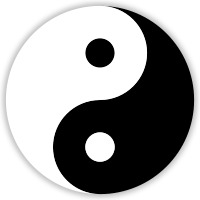
The Book of Changes and the Elusive Theory of Everything “Both modern physics and ancient Chinese thought consider change and transformation as the primary aspect of nature, and see the structures and symmetries generated by the changes as secondary,” he wrote. In his 1975 book, “The Tao of Physics,” physicist Fritjof Capra wrote that this octagonal pattern is similar in certain ways to the meson octet “in which particles and antiparticles occupy opposite places.” The important part for Capra is that the concept of structure and change is similar. The trigrams each represent essential principles of reality and they are arranged in an octagonal pattern based on the relationships and interactions between them.

The eight trigrams are presented in the classic Chinese text “I Ching” (“Book of Changes”), an important and fundamental work in Chinese history.

Eight Trigrams and Particle ArrangementsĮight symbols made up of different combinations of lines, known as the eight trigrams, surround the yin-yang symbol. Here’s a simple look at a few such concepts. Many concepts in ancient Chinese science correspond to ideas physicists have only formed in the past century or so. (AB Lagrelius & Westphal) Right: Niels Bohr’s coat of arms designed by him with the Taoist yin-yang symbol included. Left: Niels Bohr, a pioneer of quantum physics. Bohr spoke of the unity of opposites and contradictions in nature. He saw that the polarized states of particles, for example, complement each other the way the two extremes of yin and yang create a balance in the Taoist understanding of the universe. Niels Bohr, a pioneer of quantum mechanics, chose the Taoist yin-yang symbol for his coat of arms.


 0 kommentar(er)
0 kommentar(er)
